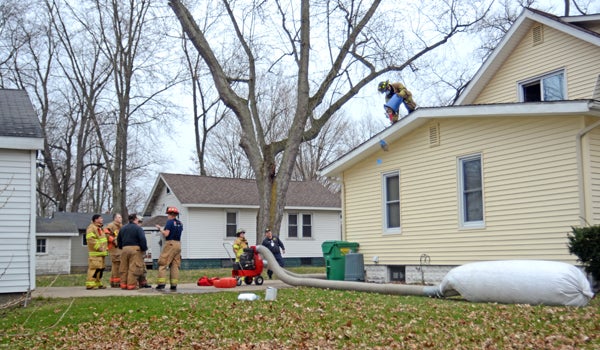Blaze likely caused by electrical malfunction
Published 9:12 am Wednesday, March 22, 2017
Authorities say an electrical malfunction likely caused a fire in the ceiling of a residence in the 1000 block of N. Seventh Street at 5:51 p.m. Monday.
Residents inside the house reported to authorities that at between 1 and 2 p.m. the ceiling fans, which were running that afternoon, stopped turning. A resident at the house restarted the breaker and soon heard a loud crash in the second floor bedroom on the north side of the house.
The fire, which had begun in the ceiling, burned through a wooden beam, causing the ceiling fan to crash to the floor.
Niles Fire Department Captain Don Wise said the owner of the home acted quickly in calling authorities and spared the house some damage in the process.
“It is good that he got it now before he was asleep,” Wise said.
Three fire units responded to the call: two from Niles City and one from Niles Township, who act as automatic aid during structure fires. The Niles police and SMCAS were also on the scene. No one was injured.
Authorities had to bring a vacuum that removes insulation from the ceiling. Wise said that the blown-in insulation at the house could cause embers to smolder slowly, reigniting the fire at a later time.
“With blown-in insulation an ember can last three to four days in there,” Wise said. “And then all of a sudden start a fire, so when it involves blown in insulation, we need to try to suck all of it out. Any area that was exposed to the fire we get it sucked out.”
Wise suspected that the embers had been burning for a couple of hours, long enough to burn through a rafter beam.
Costs of damage, which would include ceiling and electrical work, are estimated between $5,000 and $7,000, Wise said.
There were no flames involved, only smoldering, so it took less than five gallons of water to get the fire out.
Wise said the source of the embers was likely a result of an electrical malfunction due to the location of the burn, which happened at the light fixture, where a two-by-four was burned away.
Authorities could not say at that time exactly how the wiring malfunctioned, though Wise speculated that a pinched or shorted wire was the cause.







